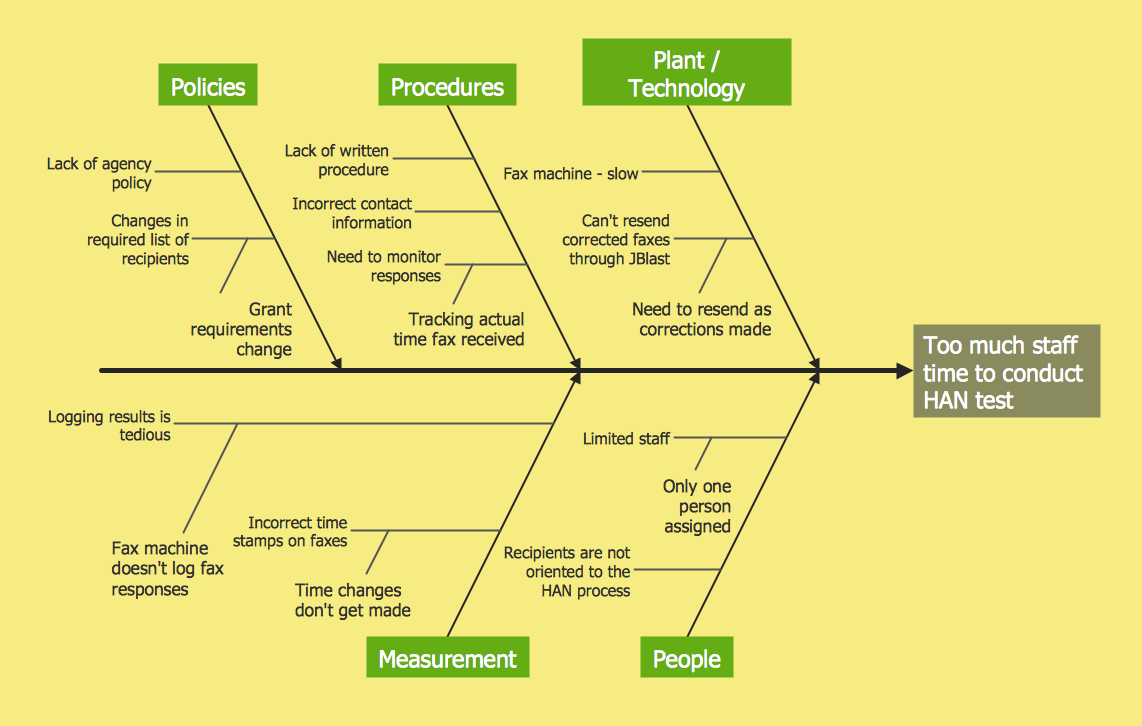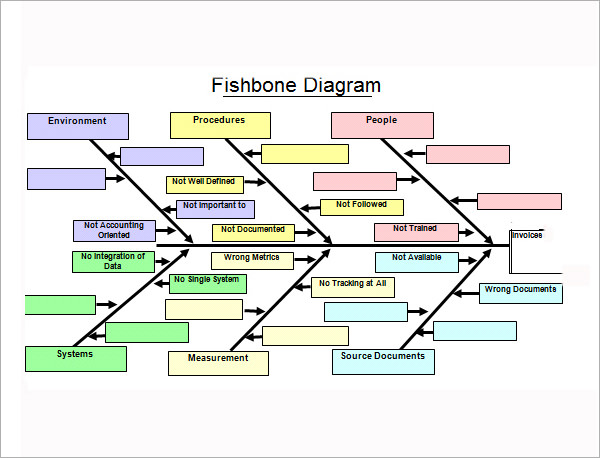
Using EdrawMind, you can create a fishbone diagram in a matter of minutes. This will help you understand why the problem exists, and what steps you can take to prevent the problem from arising in the future. By continuously questioning and analysing the causes, you will soon get to the root of the problem. The third step is to draw a line extending from the left edge of the fish head to the right. Step 3 in constructing a Fishbone Diagram. The second step is to write the specific problematic outcome to the far right edge of the diagram and draw a box around the text to form the head of the fish.
.png)
Each causal factor can have its own branch and sub-branches.Ĥ. Step 2 in constructing a Fishbone Diagram. A framework could be: The 5-M model The SHELL model or. While it’s not absolutely necessary to choose a framework, it keeps each fishbone diagram consistent. At the same time, keep asking " why does this happen?" about each cause. The first thing you need to do to complete a fishbone is choose your framework. These categories will run along the ‘body’ of the diagram.ģ.

Typically, these are Equipment, Process, People, Materials, Environment, and Management. Is there a recurring problem you and your team are facing? Once you have identified this, it will be placed at the ‘head’ of the diagram.Ģ. In the latest XMind, we have improved the layout of the fishbone and optimized the logic when digging causes of the problem, helping you to focus when analyzing a problem, and always be motivated.To effectively create a fishbone diagram, split the process into two parts: the planning phase, and the drawing phase. Analyze an Issue and Identify Potential Causes.ĭraw a fishbone diagram is not hard, but drilling deeper and deeper for various causes is hard. You can use fishbone in the following activities: 1. Where there’s a problem, there comes a fishbone diagram. That is when the cause is specific enough to be able to test a change and to measure its effects.

You can keep asking yourself why until you’ve reached a level of useful details. Step 4: Generate a list of causes based on the category. The process of categorizing potential causes may be very useful to help you to break down a complex problem and focus in on it from various perspectives. Step 3: Write the problem statement in a box in the mouth, and decide the categories that you think might include the potential cause of the problem. You can change the structure, or just keep it. Step 2: The head of a classical fishbone diagram is usually on the right of the page. Step 1: Choose Fishbone in the pop-up window.
Creator of fishbone diagram how to#
How to Create a Fishbone Diagram in XMind The fishbone diagram helps you to determine the variables so that you can find ways to deal with them and approach to your goal steadily. Ishikawa or fishbone diagram is one such diagram to detect the causes and effects of various imperfections, failures, or defects in the business. Step 1: Choose Fishbone in the pop-up window. Here is a fishbone diagram about how to live a healthy life, from which you can see the different ways to improve your life quality. How to Create a Fishbone Diagram in XMind. There are 6 commonly used categories in the fishbone diagram. There are 6 commonly used categories in the fishbone diagram. Categories can be regarded as variables in a product, a process, or anything that keeps you from perfection. You can also decide these categories based on your situation. The head of the fishbone diagram is the problem itself, while each bone connects to its spine represents a category of the potential causes of the problem. Let’s have a closer look at the fishbone diagram. Until today, this diagram is also considered part of the basic seven tools of quality control today. The fishbone diagram is also called Ishikawa diagram because it was primarily used as a basic tool of quality control by Kaoru Ishikawa at the University of Tokyo.

Today, we will find out what is fishbone diagram, and put it into use for discovering potential solutions of existing problems. Use cause-and-effect diagram, also known as fishbone diagram, because of the resemblance to the bones of a fish, to explore and display the possible causes of a certain effect. Identify the changes we can test to improve a process or a problem is a common challenge for individuals, teams, and enterprises. Break Down, Analyze and Identify Causes with Fishbone


 0 kommentar(er)
0 kommentar(er)
